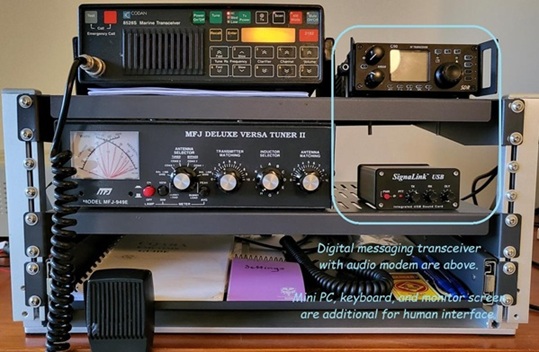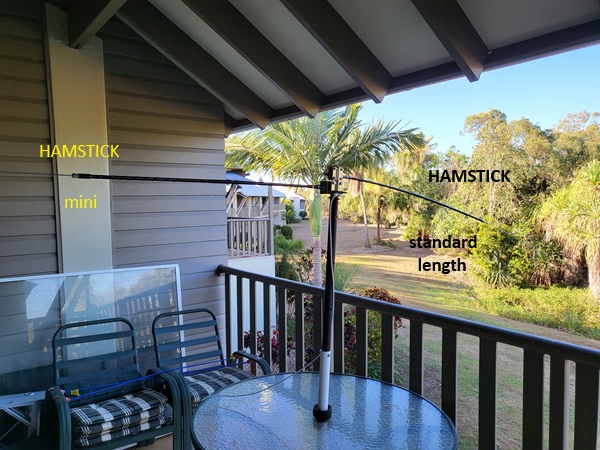VK4GED RMS on HF bands in Queensland, Australia
Our monoband RMS is usually on the 40 metre band. We 'shadow' VK4DJC's RMS which is on the same frequency 7060.0 kHz dial. There's 400 kilometres between us, so select whichever station gives best access to Winlink email from your location.
Antenna-wise, we have been using a compact horizontal dipole oriented NW/SE. The radiation pattern suits most radioamateurs in Queensland who live along the east coast of northern Australia. The dipole was made up of two back-to-back standard length Shark Hamstick mobile whips.
More recently, we have been testing the dipole with one standard length whip and one Shark mini (shorter) whip. The mini version fits easier on our balcony where antennas are mounted. There seems to be about an S-point difference between the standard and mini antennas.
On request, to check propagation, mobile whips can be mounted on top of a vertical pole, providing omnidirectional signals on the 80, 40, 30, 20, 12 or 10 metre bands.
Our RMS's transmitter is a fan-cooled Xiegu G90 outputting 20 watts. The receiver preamp is on, and the AGC is set to Fast. The audio interface is a SignaLink USB box connected to a DreamQuest miniPC running RMS Trimode software on Windows 11.
The RMS settings are:
. Mode = VaraHF only.
. Session Timeout = 45 minutes, unregistered VARA connections limited to 30 minutes.
. Maximum Daily Usage = 150 minutes.
. Wide channel bandwidth = 2750 Hz, 500 Hz connections accepted.
. Morse ID = on.
. Service Codes available = PUBLIC (default), WICEN and VK4WICEN on request.
. Availability = H24, except when testing and voice transmissions (check our VARA status on https://winlink.org/RMSChannels).
We're a member of the VK4 WICEN/EmComms group (https://groups.io/g/vk4-emcomms).


- VK4GED's blog
- Log in to post comments
